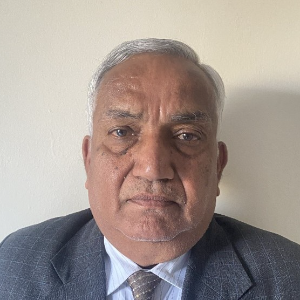Title : The future of hydrocarbon gas reserve in Vindhyan sedimentary basin around Souther Bundlekhand region, South Ganga basin, M.P. India.
Abstract:
The southern Bundel Khand region of the South Ganga basin is characterized by the occurrence of the hydrocarbon and helium gas in the rocks of the Vindhyan Super group, which were deposited in an early Middle to Late Proterozoic era in the Indian continent. This sedimentary basin is spread over an area of 5,00,000 sq.km right from Bihar, Uttar Pradesh M.P. Rajasthan regions .Due to creation of the new low marine basin, the preservation of insitu as well as continental organism along with rocks of proliferous basin with their rich fossil fuel, in this region could be possible, and can be explore with the joint collaborative studies with CGWB, New Delhi and ONGC, DGH, NOIDA U.P. etc.
The rare has helium and hydrocarbon gases must have been generated over a great depth in the geological time scale, by the biological conversions and chemical reactions induced by the high pressure and optimum temperature. The gas must have been generated from humic palynofacies and minor sapropelic component by thermal cracking. In the Vindhyan sedimentary basin , around Jabera area near the North Narmada Son Fault(NNSF),the salt dome must have been injected and formed the domal structure, which is responsible for the formation of hydrocarbon and helium gas in the less deformed Vindhyan rocks and gases are accumulated in the part of domal anticlinal axes all around the Jaber- Sing Rampur dome in the Damoh Distt.
On the basis of geochemical analysis, it is remarkable to note that average values of helium contents varies from 0.34 % to 0.732 % along with the 72% to 99 % of methane and ethane, and minor amount of oxygen, nitrogen and CO2 gases in the hydrocarbon rich zone are recorded during the geochemical and stable isotope analysis. It has been found in the stable isotop δ C13 value the values for the methane is - 43.6 per mil w. r. t. to - 54.9 per mil w.r.t. PDB and for the Ethane gas is --24.9 to --26.4 per mil w. r. t. PDB in the gas samples collected in the saturated sodium chloride solution in the glass bottles at various sites in Sagar & Damoh District. The occurrence of rare helium gas in the Hydrocarbon rich zone is reported first time in Jan, 2007 from the tube wells of Sagar Distt, which were geochemically and stable isotopically analysed in the labs of KDMIPE Dehradun & NGRI Hyderabad. The gaseous hydrocarbon analysis show the presence of moderate to low concentration of methane ( C1) 1 to 104 ppb, Ethane( C2)-1 to 14 ppb, Propane( C3) 1 to 10 ppb, i- Butane ( i C4) 1 to 9 ppb and n Butane ( n C4) 1 to 8 ppb in the soil samples collected from different locations.
The Result of the adsorbed soil gas and stable isotopic analysis of Ethane gas in these samples δ C13 value are ranging from -24.9 per mill w.r.t. PDB and -26.9 per mill w.r.t. PDB are indicative that this gas is of thermogenic origin, which must have been formed at very high temperature & pressure condition in the deeper horizon of the Great Vindhyan sedimentary basin of an early Proterozoic ( > 600 m.y.) period.
(Keywords- hydrocarbon, helium,sedimenatry basin,thermal cracking,thermogenic,proterozoic, domal structure)


